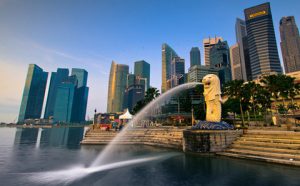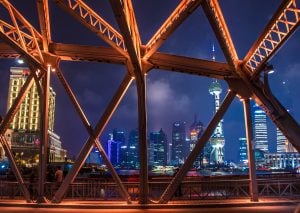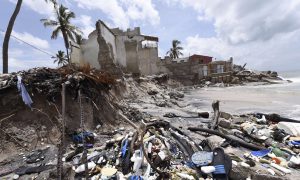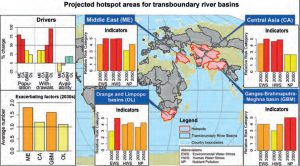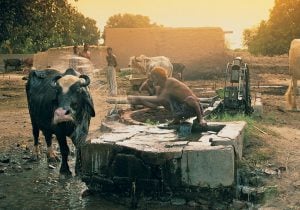Anyone visiting Singapore, as I did last month, quickly realises that it is exceptional. A tiny, rich, stable city-state of nearly 6 million people is positioned uneasily in a region dominated by much larger countries where poverty and instability are commonplace.
Singapore is a thriving free-market trading and financial centre, which is also meticulously planned, and where 80% of people live in public housing.
Perhaps the nearest historical comparison to Singapore is Venice in its heyday. Even Hong Kong and Luxembourg shelter in the protection of larger political entities. Singapore is even unique in its climate. No country is both warmer and wetter.
But look below the shining surface and Singapore faces more than its fair share of dilemmas in dealing with a changing climate.
While it has comprehensive coastal defence plans, and perhaps the world’s most advanced water management system, nothing can protect Singapore from extreme climate change.
Unless the world delivers faster and deeper emission cuts than agreed in Paris, long term sea level rise will reach over five metres and potentially much higher.
Surging seas
Low-lying Singapore could not survive such extreme sea levels as an independent country. Much of the densely urbanised country is 15 metres above sea level and a third of the land surface is only 5 metres above. Even with expensive protection measures effects on the water table may be grave.
Based on current projections, such extreme increases are only likely to arrive in 200-300 years, but countries do not discount their fundamental security as if it was just any other economic investment.
With a security budget of nearly 6% of GDP, Singapore clearly values its independence and is prepared to pay for it. Climate change represents an existential threat to Singapore.
Singapore is responding. Its highly sophisticated city administration is already planning to manage those impacts of climate change within its direct control. It will strengthen sea defences to deal with immediate sea level rise.
Through increasing water efficiency and capturing more rainfall it will be able to ride out the longer droughts and more violent rainstorms it expects to experience.
The government has innovative plans to adapt housing and increase natural shading in order to ensure urban liveability even as temperatures climb.
Its sophisticated healthcare system will adapt to manage any spread of infectious diseases and ensure care for the elderly and vulnerable during extreme heat waves.
In all of these areas Singapore is model for other tropical countries, and many temperate ones too.
Domestic security
The problem is that Singapore main vulnerabilities lie beyond its direct control outside its borders. To prevent the most extreme sea level rise scenarios global emission pledges have to increase sharply in 2020.
The logic of climate diplomacy is that the best way to encourage others to do more is to reduce emissions more rapidly yourself. But Singapore is limited in what it can offer in terms of cuts because its small land area restricts the availability of domestic renewable energy.
It could however connect to the plentiful renewable resources in its close neighbours Indonesia and Malaysia through a regional grid.
However, this solution raises security concerns and political barriers, and would require a great deal of diplomacy and relationship building to become a reality.
Singapore gets plentiful rainfall and can ensure water security at home, but it still has to import 90% of its food.
Even the most heroic attempts to increase local production will not change this.
Singapore remains dependent on an open global food market where it can buy what it needs.
But the global crisis of 2008/9 showed this system can break down under multiple climate and economic stresses, which will increase rapidly in the coming decades.
Trading hub
Singapore’s adaptive capacity also rests on its ability to generate continued economic prosperity and thus the funds to invest in domestic resilience. The core of this is its role as the world’s largest container port, and the key shipping link between China and Europe.
Ironically the melting of the Arctic, which has been induced by climate change, threatens to undermine this position as shorter Northern sea routes to Europe become viable.
Singapore has even become an observer at the Arctic Council in order to monitor this economic threat.
And even without competition from new shipping lanes, the Chinese “One Belt, One Road” initiative will likely spur a network of transcontinental railway lines that can move freight faster and safer across Eurasia than traditional shipping.
Singapore’s other key export earners are petrochemicals, finance and insurance. The petrochemical industry will need to radically adapt to a low – and eventually zero – carbon world. The G20 Financial Stability Board has already identified a range of systemic risks to the financial and insurance sectors from climate change. Singapore will need to adapt its economic development plans to meet these new realities, and take advantage of the growing markets in green finance and low carbon chemicals.
Regional partners
Finally, as Europe is currently experiencing, Singapore cannot isolate itself from crises in its close neighbours. If climate change and environmental stresses are badly managed in Malaysia or Indonesia – or even further afield in southeast Asia – Singapore will find itself a magnet for refugees; whether from natural disaster or social conflict. Singapore needs strong and resilient neighbours to preserve its own security.
This is why even rich, unique and exceptional Singapore encapsulates the global climate crisis.
However hard the city-state works to protect itself from the impacts of climate change at home, it cannot achieve security and prosperity without cooperating globally and regionally.
There are no walls high enough to insulate any of us from the consequences of extreme climate change.
Diplomacy
That is why we need to invest not just in more hardware, but in the diplomacy and stronger international cooperation needed to reduce climate risks and manage unavoidable consequences.
As Singapore knows, this will involve working with, and depending on, countries with whom we have strong – even fundamental – disagreements and disputes in other areas.
But we can’t wait for a perfect world to solve the climate crisis. We must solve it in the world we have.
That is the real dilemma of climate change.
The original version of this article was published on E3G’s website and can be found here

